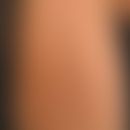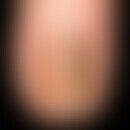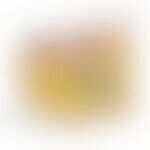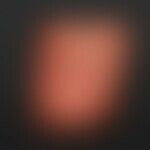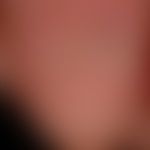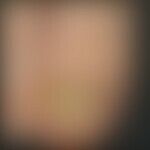Synonym(s)
DefinitionThis section has been translated automatically.
Nails, also known as nail plates, are specialized structures of the epidermis that only occur in primates.
Nail plate: The nail plate is a (dead) keratin product (see keratin below) of the epidermis and consists of transversely curved horny plates (nail plate) with a longitudinally oriented linear structure and are located on the dorsal side of the phalanges of the fingers and toes. Most nails are stronger in the transverse axis than in the longitudinal axis. The nail plate in Caucasians physiologically contains no melanin (see melanonychia). It consists of corneocytes without nuclei that adhere firmly to each other. It is transparent so that the nail bed, which is well supplied with blood, can shine through in pink. The nail matrix consists of a dense network of nucleated keratinocytes and is no longer transparent.
Onychic nail formation, or onychization, is a type of keratinization which, in contrast to the keratinization of the skin surface epidemis (epidermization), occurs without the formation of keratohyalin granules. It is thus similar to the (tricholemmal) keratinization of the hair root (see epidermis; see keratinization, cf. keratinization of the hair). The formation of keratohyalin granules is therefore a pathological process for the nail.
Nail bed: The nail bed consists of parts of the proximal and distal nail matrix and the hyponychium. The nail matrix is the growth zone of the nail. It extends 3-6 mm below the proximal nail fold. The connective tissue part of the nail bed is firmly fused with the periosteum of the end phalanx. The proximal part of the nail matrix forms the superficial third of the nail plate. The lower 2/3 of the nail plate is a keratinization product of the distal nail matrix (dorsal/venal plate). On the proximal nail plate, the lunula (crescent) stands out as a whitish, opaque zone in the shape of a circular segment. It corresponds to the distal part of the matrix. The nail matrix and nail plate are firmly fused together. At the distal end, the 0.2-2 mm wide onychodermal band corresponds to the edge of the adherent nail. Immediately distal to this is the free nail edge, which appears whitish due to the air beneath it. The underlying skin zone is called the hyponychium, a zone without dermatoglyphs and adnexa.
Nail root: The proximal end of the nail plate (nail root) arises from an epidermal invagination (nail pocket = sinus with proximal nail matrix). The invisible epithelium lying dorsally on the nail plate in the nail pocket is called the eponychium. A fine, non-sensitive, keratinized cuticle protrudes from this epithelium onto the nail plate, closing the nail pocket dorsally and thus assuming an important function. This is called the cuticle or cuticle (also perionychium or perionyx).
The nail matrix extends from the proximal end of the nail pouch to a visible crescent-shaped light-colored zone of the lunula (nail moon). The nail plate is a product of the proximal and distal nail matrix, whereby the length growth is many times greater than the thickness growth. If the proximal nail growth is disturbed, the forward length growth of the nail plate can stop in favor of thickness growth. The result is a disproportionate thickness growth of the nail plate, an onychogrypose.
Laterally and proximally, the nails are surrounded by a fold of skin, the so-called "nail wall" (also known as the nail fold or paronychium).
General informationThis section has been translated automatically.
Nail growth: Nails grow at different rates depending on age (infantile nails grow much faster than nails of old people) and localization (toenails grow slower than fingernails). Nail growth in a healthy person is about 0.05- 0.12 cm per week. See below nail diseases. A complete fingernail is thus formed in 4-6 months. Toenails need 2-3 times more time (about 12-18 months for complete growth). Nails grow faster during the day than at night, faster in summer than in winter, faster in men than in women. Versch. Dermatoses/medications cause acceleration (psoriasis vulgaris, pityriasis rubra pilaris, pregnancy, hyperthyroidism, levodopa, terbinafine), others cause deceleration (atopic dermatitis, malnutrition, methotrexate, azathioprine) of nail growth.
Nail thickness: The nail plate is composed of 100 to 150 layered horn cells. Their thickness ranges from 0.05 (infants) to 0.75 mm (adults).
Nail diseases: Various congenital or acquired diseases may cause considerable thickening(pachyonychia) of the nail plate (see below Onychogrypose, Scleronychia, Onychomycosis). Furthermore, circumscribed or complete thinning, pathological discolorations (dyschromia) or depressions (e.g. the so-called stippling in psoriasis), transverse and longitudinal grooves as well as roughness (trachyonychia) of the nail plate may occur.
